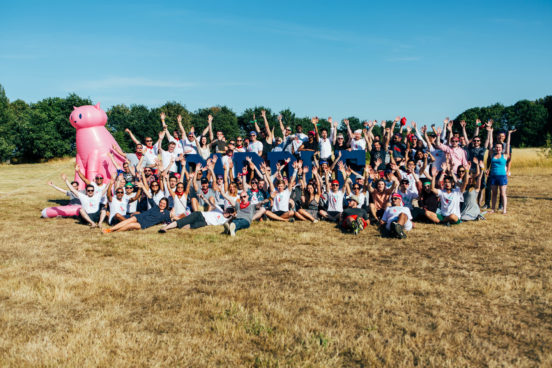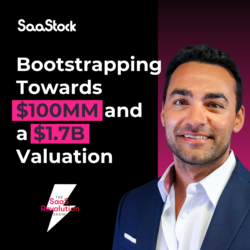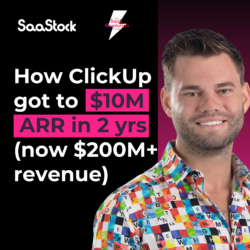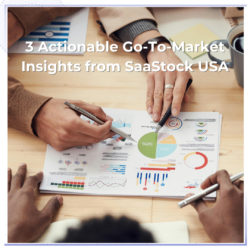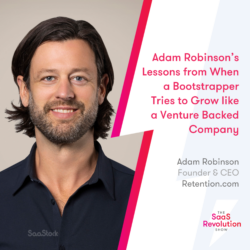This is a guest post by Georgiana Barbanta from Paddle. If you are a SaaS founder or executive from a minority background, we have an excellent opportunity for you: a free ticket for SaaStock19 through our Taking Stock D&I Program. You will get a full 3-day pass with access to all stages, parties, and activities, plus an exclusive mentorship opportunity with mentors such as April Dunford, Tara Robertson, Georgina Laudi, Andy Davis, Evgenia Plotnikova, Andrea Long, and others. Don’t miss this opportunity and apply now.
Talking about diversity, inclusion and belonging (D&I) in the workplace is becoming more and more commonplace among businesses of all sizes and industries. All that talk is a noble first step to inspiring actionable progress but it’s not enough. All too often, an unwanted side effect of the numerous keynote speeches, thinkpieces, panel events and fireside chats on the topic is turning D&I into a corporate exercise. We give each other food for thought, stop there and pat ourselves on the back for a job well done. You see this every year in things like Pride Month: All throughout June, companies turn their logos rainbow-coloured, partner with a non-profit to deliver a casual mixer or two and maybe join a parade. Don’t get us wrong, we do all those things at Paddle, too. What bugs us (and, it seems, a lot of other people as well) is the fact that, come July, the rainbow is washed off and all reverts back to business as usual for the next 11 months. While we’ve become great at making D&I a buzzword, we’re still in infancy when it comes to driving actionable change on the back of it.
At Paddle, we’re not perfect at this by any means. Like most, we’re still learning when it comes to creating a workplace where everyone truly feels like they belong and we will probably never truly reach the end of that road – one reason for this being that D&I covers a vast area, from gender to age to ethnicity to socioeconomic background to religion to many more. The permutations are seemingly endless, and when people argue about political correctness part of this discourse may be fear of how easy it has become to “offend someone”. And while it’s true that taking everyone into account is hard, this is exactly what we at Paddle view D&I to be at its core. We take many small and seemingly trivial (but vital) initiatives every day to ensure we create a sense of belonging: from respecting our teammates’ dietary preferences and requirements at our weekly catered lunches and birthday cakes, to keeping the common area free of nuts, to having a designated prayer room for our Muslim members, to celebrating more than just Christmas (like Diwali and Ramadan), to tailoring our job descriptions (and our entire selection process) to appeal to a diverse set of talent, and more.
We were recently nominated as finalists to the In-house Recruitment Awards alongside Accenture, Expedia, and Transport for London and wanted to share where we are now with our efforts. Here’s our 3-step strategy.
STEP 1. Embed diversity and inclusion into your employer branding strategy
We focused on telling authentic company stories, discovering that the easiest way to do this was by showcasing our employees speaking openly about their Paddle experience, particularly through blog posts, video, and LinkedIn content.
Job descriptions matter
We worked with hiring managers to improve the way we talk about our open roles by implementing a few diversity and inclusion best practices. These include:
- Committing to equal opportunities. This may seem simple, but for us, it proved to be powerful, as our values and culture are built around that statement.
- Using inclusive language to avoid deterring applications from diverse candidates. (Words such as “competitive,” or “leader” are associated with male stereotypes, for example. If you are not sure where to start with the language your company is using, content analysis tool like Textio can be useful in highlighting your use of certain words as demonstrated below).
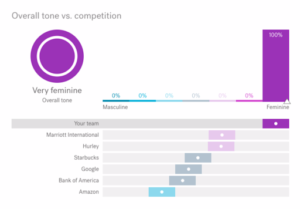
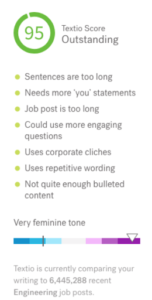
Visuals are as powerful as language
As humans, we are wired to seek a sense of belonging and the last thing we want is for underrepresented candidates to exclude themselves from the selection process based on the images we show them. We tried to mitigate this by adding some warmth to our posts and creating a non-gender explicit set of images that can accompany job ads for various roles.
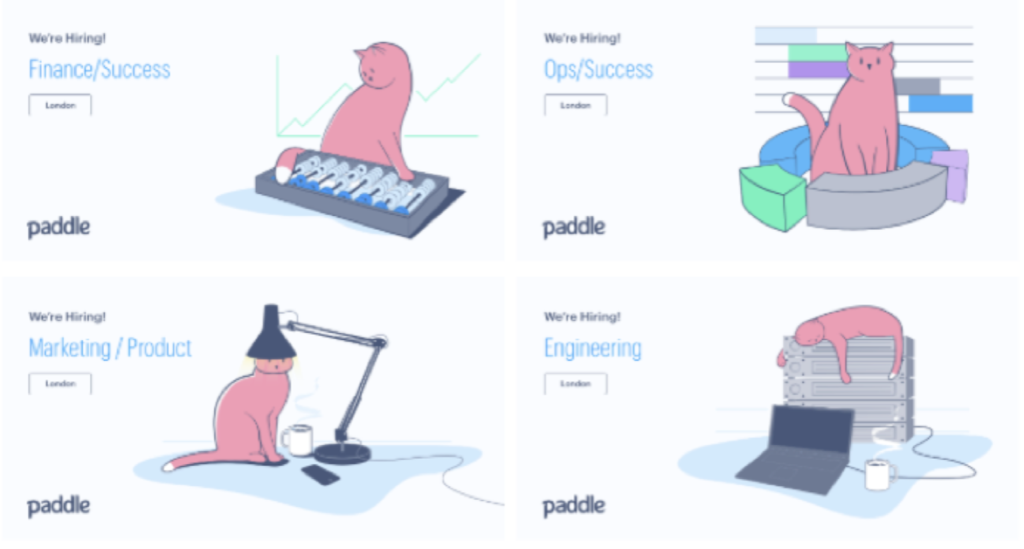
It’s good to leverage partnerships and networks
Generating interest in diverse communities can be quite tricky, especially if your company is pretty much unknown to them. This is why we partnered with LGBTQAI+ (InterTech myGwork) and Women in Tech organisations like Coding Black Females and Women in Product Code First: Girls and got involved with hosting and sponsoring some of their events.
We also set-up an Engineering apprenticeship levy for underrepresented groups through Makers Academy and signed up to the Tech Talent Charter to further our mission towards a more diverse and inclusive tech workforce.
Since our employees tell the most powerful stories, we encourage them to become Paddle ambassadors and wave our diversity and inclusion flag at different events and so we offer public speaking coaching sessions to equip them with the skills necessary to spread the word!
STEP 2. Take a proactive diversity and inclusion approach to recruitment
At Paddle we incorporated diversity and inclusion practices into our talent acquisition strategy, focusing on building more diverse pipelines and creating an inclusive candidate experience.
Partnering with agencies is a great way to achieve this. We collaborate with agencies that specialise in diversity recruitment and we also take matters into our own hands by actively sourcing more diverse candidates to balance the hiring pipeline. We do this by:
- Including terms like “she” and “her” and variations on “women”, “ladies”, “girls” and even common female names in search strings.
- Playing around with sections such as “year of graduation”, “seniority” and “years of experience” to make sure we access a wider age range of talent.
- Include EU-spoken languages in search strings.
- Reaching out to movements and initiatives the likes of Latino Professionals, Blacks In Technology and Blacks Gone Geek.
Going hand in hand with the above, we redesigned our selection process to make it more inclusive.
- Candidates now meet Paddle interviewers that represent both genders and come from various backgrounds.
- We use scorecards to assess candidates at each stage of the selection process to ensure that we run an objective recruitment process.
When we first began redesigning our selection process we looked into some tools that enable you to do blind CV screening but we soon came to the realization that this doesn’t solve the problem. To nurture a good company culture, interviewers need to be mindful of their own biases and be willing to challenge them in order to create a better and more inclusive workplace.
STEP 3. Create a culture of inclusion
We used our values as a benchmark and decided on the benefits and policies we can implement in order to support a culture of wellbeing and personal growth where everyone can thrive. We’ve therefore implemented several employee benefits, including:
🍼 ‘Family-friendly’ policies such as equal maternity and paternity leave.
🏝 Unlimited (flexible) time off – we trust that our employees know best when to unplug and recharge.
🤒 Health and wellbeing – we offer private health insurance, a cycle-to-work scheme, on-site massages, in-office yoga, subsidized gym memberships, a monthly cash wellbeing payslip add-on and access to external coaches to support our employee’s mental health.
🗓 Flexible working – we advocate that everyone should work in a way that makes sense for them.
Our staff has also responded positively to the many small considerations we make on a daily basis:
- We respect our teammates’ dietary preferences at our weekly catered lunches, team socials, and parties.
- We have a designated prayer room for Muslim members.
- We organize events during working hours, mindful that people need a good work/life balance.
- We celebrate a multitude of religious holidays such as Diwali, Christmas, and Ramadan.
Adopting this way of thinking does take time. Behaving accordingly in your day-to-day can be a challenge. But we believe that it is the foundation to build a truly inclusive workplace upon. To act inclusively, think inclusively first. And while the large building blocks like equal parental leave or flexible working are certainly key benefits to have (we do), it’s the ways in which we engage with each other from Monday to Friday and beyond which will make the whole team advocates for a company that’s not just all talk, but action. The more we approached in-office initiatives and activities with the simple question “can everyone get involved?”, the more our team members are now helping us find new ways in which we can create an even more inclusive culture.
